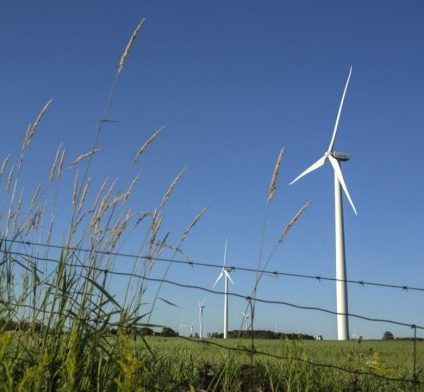 A year of record investment by the federal government’s Clean Energy Finance Corporation has helped deliver 10 large-scale solar projects and four wind farms in the past 12 months alone – a total of 1,100MW – a new report has revealed.
A year of record investment by the federal government’s Clean Energy Finance Corporation has helped deliver 10 large-scale solar projects and four wind farms in the past 12 months alone – a total of 1,100MW – a new report has revealed.
In an update on investment commitments in the 2017-18 financial year, the green bank which the Abbott-led Coalition government tried so hard to dismantle, confirmed it had invested a total of $2.3 billion for the year – $1.1 billion of which was in renewable energy.
The report, published on Monday, said the CEFC had now financed at total of more than 20 large-scale solar projects and more than 10 wind farms Australia-wide in just five years of existence.
“Together these projects are targeting more than 2,400MW of additional renewable energy, sufficient to power more than 800,000 homes,” the report said.
After renewables, the CEFC’s FY18 commitments included $939 million in energy efficiency, $100 million in transport and $127 million in waste-related projects.
The report also made special mention of energy storage, which the CEFC said would play a critical role in extending the benefits of low-cost solar and wind across the electricity market.
So far, four of the large-scale renewables projects the CEFC had invested in included a storage component. A further 24 smaller-scale storage projects had been financed through partnerships, the report said.
But the CEFC – whose budget was trimmed to just $530 million for 2018-19 – says there is “considerably more work to do,” both in renewable energy and beyond, requiring action right across the economy.
“Cutting greenhouse gas emissions remains a substantial business and investment challenge for Australia,” the report says.
“We welcome the level of private investment we have catalysed alongside our own finance. At the same time, we recognise there is considerably more work to do, requiring action right across the economy, in renewable energy and beyond.”
The comments come as the states continue to deliberate their position on the federal government’s proposed National Energy Guarantee, which many – including former CEFC CEO Oliver Yates – have warned will bring a halt to renewable energy investment, post 2020.
Yates, who is now executive director at UPC Renewables, said earlier this year that the NEG’s threatened to “pull the carpet out” from under existing solar and wind energy investments and actually stop future investments.
“This is very bad for our industry and very bad for the nation as a whole, as this orderly investment and orderly transition towards using new generation assets is required.”
And – “as a banker” – Yates also warned against the mentality that the NEG could be legislated now, and tweaked later, under a future Labor government, or a more enlightened Coalition.
“It is impossible to invest on the assumption of election results,” he said.
“The only way that we can get certainty… is if the federal emissions level set within the NEG is around 50 per cent for the electricity sector.
“I can ensure you that no investor ever anticipated that the electricity sector would only reduce its emissions between 26-28 per cent by 2030.
But current CEFC CEO Ian Learmonth said the green bank had so far kept up its role as leading investor in Australia’s renewable energy sector, and would continue to invest “with a clear commercial focus,” and a mandate to reduce emissions.
“We are proud to report that each dollar of CEFC investment commitments has been matched by more than $1.80 of private sector finance,” Learmonth said.
“Equally important, our portfolio of investment commitments is targeting annual cuts to greenhouse gas emissions of 10.8 million tonnes of CO2-e, and lifetime cuts to greenhouse gas emissions of more than 190 million tonnes of CO2-e.
“The opportunities are substantial, as is clearly demonstrated by the strong pipeline of projects seeking
CEFC investment,” the report added.
“Technology is advancing rapidly, and costs are continuing to fall across the clean energy economy. We see a growing impetus from asset owners, businesses and investors to cut emissions and to capitalise on the exciting economic potential of clean energy.
“We remain committed to increasing the impact of our capital, supporting innovative approaches to
cutting greenhouse gas emissions with other investors.”









